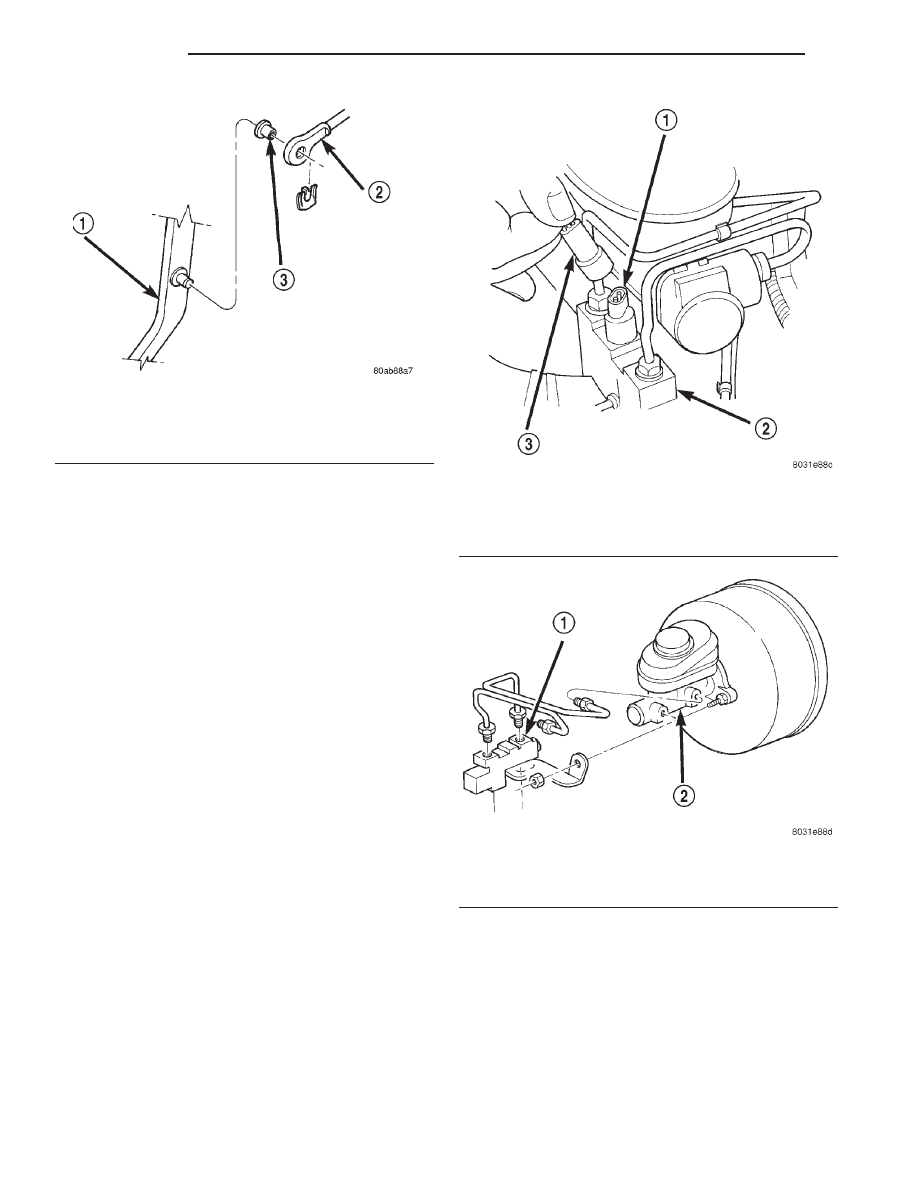Jeep XJ. Manual - part 50

INSTALLATION
(1) Install pedal and support bracket as an assem-
bly into the vehicle.
(2) Install nuts securing the booster to the pedal
support bracket and nuts to the column bracket.
(3) Tighten nuts to 39 N·m (29 ft. lbs.).
(4) Lubricate the brake pedal pin and bushings
with Mopar multi-mileage grease.
(5) Install booster push rod on pedal pin and
install new retainer clip.
(6) Install knee blocker.
COMBINATION VALVE
NOTE: The combination valve is not repairable. The
valve is serviced as an assembly only.
REMOVAL
(1) Remove air cleaner cover and hose for access to
valve.
(2) Unsnap connector lock tabs and disconnect dif-
ferential pressure switch wire at combination valve
(Fig. 19). Do not pull switch wire to disconnect.
(3) Disconnect brake lines at combination valve
(Fig. 20).
(4) Remove mounting nut and remove valve.
INSTALLATION
(1) Install valve and tighten mounting nut to 17
N·m (155 in. lbs.).
(2) Connect brake lines to replacement valve. Start
line fittings by hand to avoid cross threading.
(3) Tighten brake line fittings to 14 N·m (124 in.
lbs.).
(4) Connect wire to pressure differential switch.
(5) Bleed base brakes.
MASTER CYLINDER
REMOVAL
(1) Remove brake lines at master cylinder and
combination valve (Fig. 20).
(2) Disconnect differential pressure switch wire
from the combination valve.
Fig. 18 Booster Push Rod
1 – BRAKE PEDAL
2 – BOOSTER ROD
3 – BUSHING
Fig. 19 Differential Pressure Switch
1 – SWITCH TERMINAL
2 – COMBINATION VALVE
3 – WIRE HARNESS CONNECTOR
Fig. 20 Combination Valve
1 – COMBINATION VALVE
2 – MASTER CYLINDER
5 - 16
BRAKES
XJ
REMOVAL AND INSTALLATION (Continued)